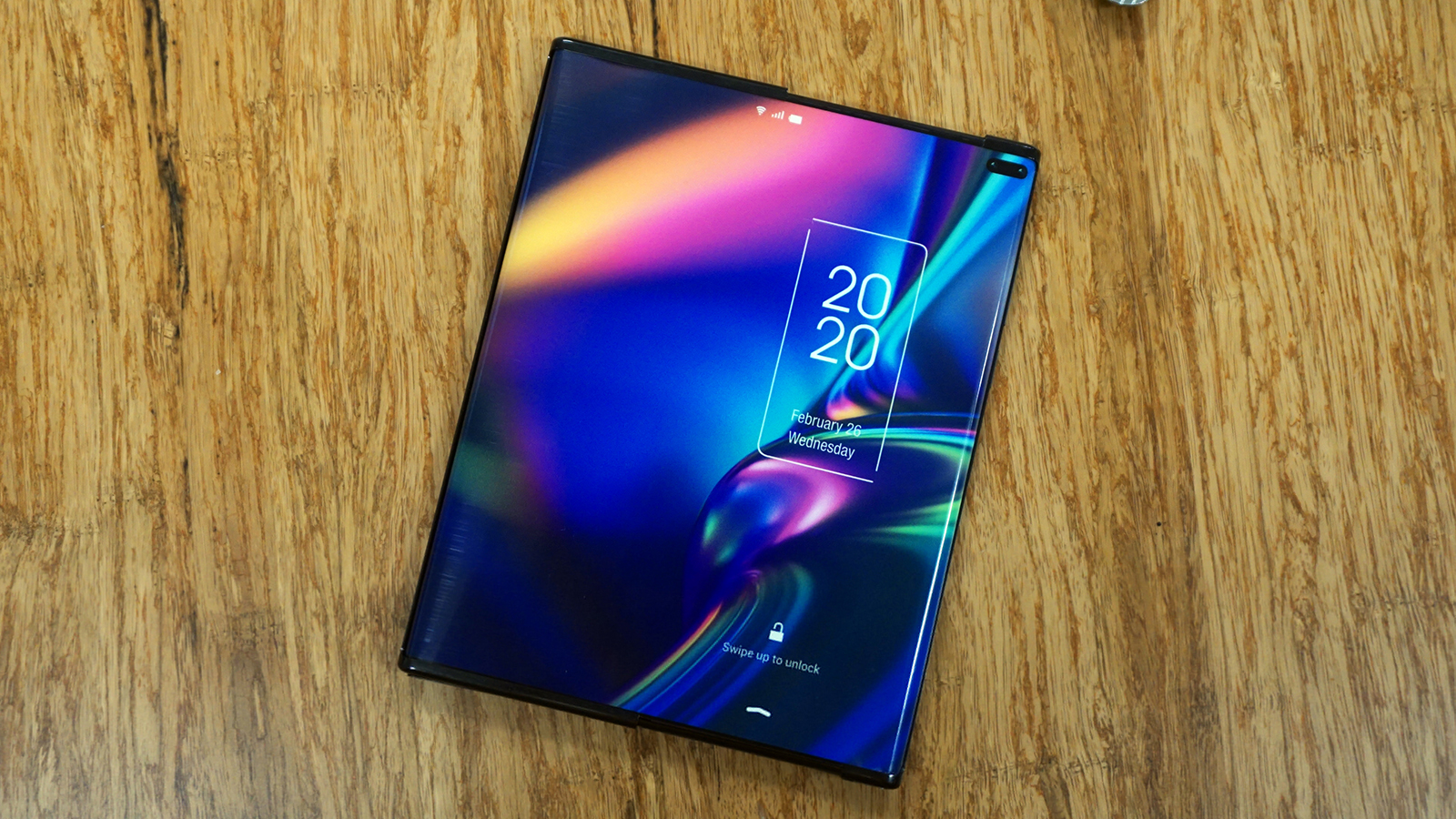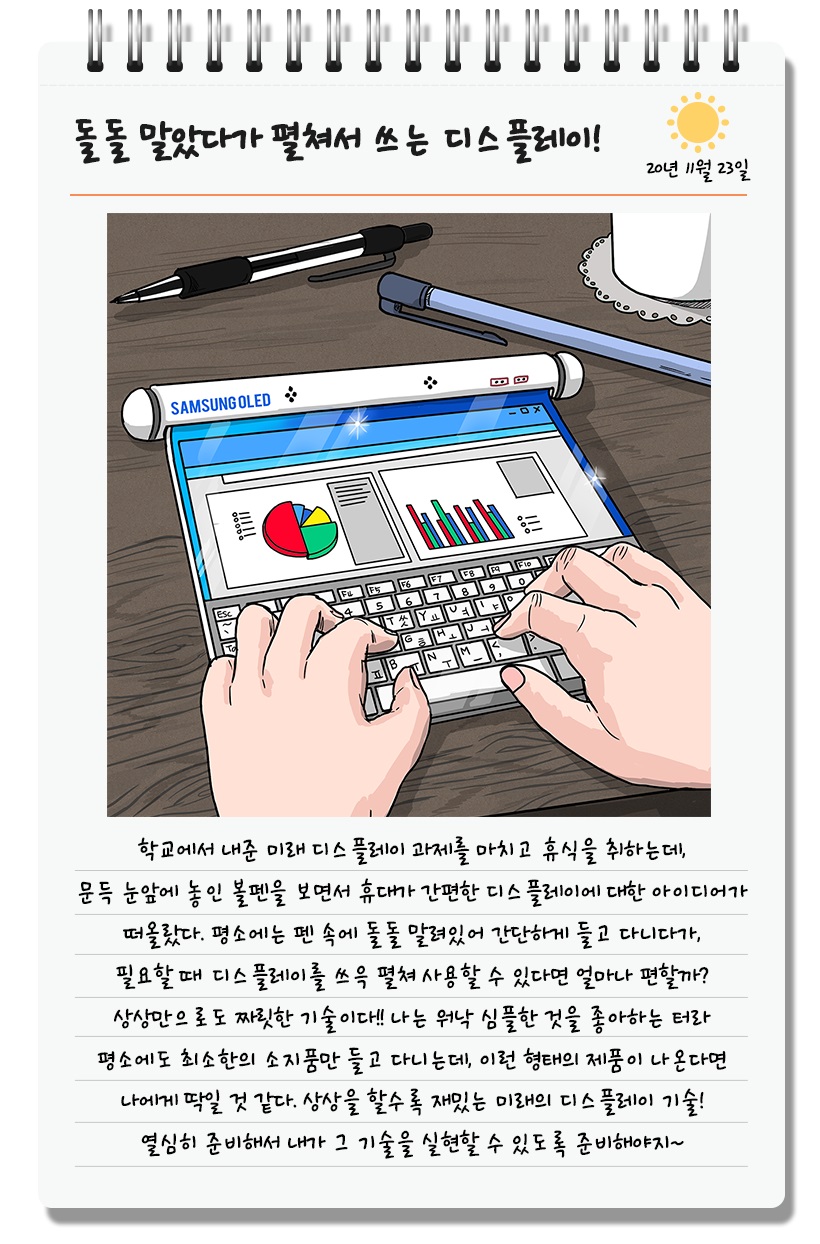CES 2021 convinced me rollable phones are the next big frontier

Two years ago, the Royole FlexPai landed at CES 2019 as the first working foldable phone, and now getting even more screen is a feasible goal. But how? Rollable phones are the next frontier, but have just been concepts and possibilities – until CES 2021, when we saw multiple brands commit to Rollables, including one pledged to hit the market this year.
And I didn’t understand why companies would try so hard to make them a reality… until we saw rollables land at CES 2021 in a big way.
Why would phone companies bet on rollable phones? Because they have the technology to supply them – the companies pitching rollables have already experimented with rolling screen tech, oddly enough, in TVs. And it’s also because consumers have received foldables warmly enough to be hungry for even more screen area, especially as we hit the upper limit on static display sizes. Some are breaking that seven inch barrier, and that’s arguably where ‘phablet’ starts turning into ‘tablet.’
Voila, rollables: get more screen by unrolling it into a larger display, then roll it back up for the phone to return to pocketable shape. Presumably, rolling but not folding the display doesn’t crease the screen, but there’s also the advantage of not having to crack open a foldable at all. Conceivably, rollable owners can just hold a phone and it will change in their hands.
There’s that kind of ease I appreciated about the LG Wing 5G – the capability to keep your eyes trained on the screen and whatever Netflix show or Twitter feed you’re watching as the display expands. Phones, seamlessly transforming. In comparison, foldables seem a little archaic.
Except foldables are a reality (if an expensive one) while we’re still waiting for the first rollable to hit shelves. After CES 2021, we’ve learned that we won’t have to wait long: both LG and TCL are expected to launch their own flexible screen phones sometime this year. Whereas the folding phone felt like a tough-to-pull-off gimmick, rollable phones seem like a more tangible possibility.
Given how few foldable phones have actually come out in the two years since they debuted, rollable phones could be a better bet.
Sign up for breaking news, reviews, opinion, top tech deals, and more.
- CES 2021: everything we've seen at the online-only tech show
- TechRadar's Hottest at CES 2021 Awards
- Samsung Galaxy S21: the first big flagship of 2021 is already out

2020, the year rollables were teased
Phone formats are a risk, especially now that the ‘black rectangle’ has become an intractable standard that designers fear to veer from. We’ve seen some brands show interest in rollables or other phone types before, but TCL was the first to put its concepts in our hands in March 2020 – though the model we held was a paper-and-plastic approximation of the final design.
Since seeing that rollable ‘concept’ in person, rumors sprung up throughout 2020 about TCL’s rollable tech, and later, LG’s name started popping up with a potential rolling-screen phone of its own, which we’ve come to call the LG Rollable. Not to be left out, Oppo released a rendered video of its own rollable concept phone, the Oppo X 2021. Even Samsung teased it was toying with the idea of a rollable phone in a blog post about future handset concepts.
Finally, the dam burst at CES 2021: first LG confirmed that its rollable is real and coming later this year, then TCL admitted it had a flexible screen phone – either a foldable or a rollable, though we’d bet on the latter given how much more we’ve heard the rumor mill point in that direction.
2021, why rollables matter
In any case, both LG and TCL are betting on foldables enough to show them off in their CES 2021 company presentations. The phones are almost certainly coming. But it’s the rollables concept, their serious advantage, that wasn’t clear until now. Let’s show you in a simple animation, which simulates how the LG Rollable will work in your hands when it’s finished:

That could be someone watching a show or YouTube video or Twitch stream until they suddenly have to go, and pocket the device, no folding or unfolding. But that’s not the only way you have to roll, so to speak: in TCL’s presentation, they showed off another rollable phone concept.
Here's a real-life peek at the TCL AMOLED Rollable Display (it'll make you feel like you're at a CES booth again!): #CES2021 pic.twitter.com/RRVM5QAqwcJanuary 11, 2021
The concept had a demonstration showing a larger 6.7-inch display that extended vertically to 7.8 inches – which is just a bit longer than the 7.6-inch unfolded center screen of the Samsung Galaxy Z Fold 2. Again, the phone extends in your hand while you’re watching it, which I believe looks like much more of a seamless user experience than a foldable. Rollables could stretch from the sides or the top, giving users and phonemakers more flexibility.
We know next to nothing about how rollable phones will actually operate, but they could have design advantages over foldables – without the hinge, the design could be more robust and less prone to dust or water obstruction. There are a lot of questions, of course, but what's clear: for once, brands like TCL and LG have the advantage over the biggest names in phones.

What it takes to make rollables a reality
It seems obvious in hindsight. Why not try new phone formats? Why was I skeptical? Concepts don’t always lead to market-favoring products; heck, we’re still waiting for word of the affordable foldable TCL pitched us on in October 2019. Tons of factors influence whether companies turn concepts into mass-market products, but mostly, it’s about whether there’s enough demand for consumers to want a new concept and whether it’s profitable to develop it.
Two things should have tipped us all off that brands would take rollable phones seriously. First, after much hype, LG actually released its rollable TV this year, albeit only in Korea (and TCL showed off its rollable TV concept). Scaling the tech down to smartphone size could be a more feasible task for both companies than, say, if they had to develop rollable screen tech from scratch.
The second thing is the phones industry itself, which has pushed foldables so successfully that consumers are open to the idea that they can have more screen area, even if it takes some funky mechanisms to get there. Rollables could be where consumer appetite meets the niche expertise of these TV-producing brands, and it’s clear that big names like Samsung and Apple aren’t leading the charge to develop the format.
Both LG and TCL are ideally situated to sprint for rollable phones, too: LG has spent years releasing new phone formats to market, from the Dual Screens on the LG G8X and the LG V60 to the multi-screen LG Wing 5G, while TCL is just starting its phones brand and has plenty of room to experiment. At CES 2021, we saw both brands claim to be coming out with flexible-screen phones in 2021, and now, I think they’ll make it happen.
- Stay on top of tech news with the TechRadar newsletter

David is now a mobile reporter at Cnet. Formerly Mobile Editor, US for TechRadar, he covered phones, tablets, and wearables. He still thinks the iPhone 4 is the best-looking smartphone ever made. He's most interested in technology, gaming and culture – and where they overlap and change our lives. His current beat explores how our on-the-go existence is affected by new gadgets, carrier coverage expansions, and corporate strategy shifts.